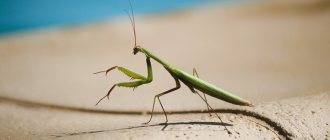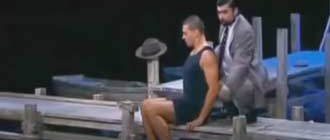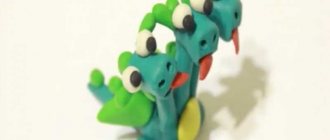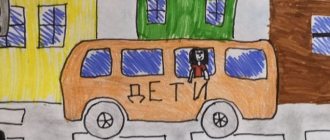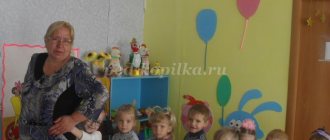Summary of a lesson in the senior group on ecology “Journey to the world of insects”
- May 24, 2017
International and All-Russian competitions
All-Russian competition of pedagogical excellence “Methodological piggy bank of a kindergarten teacher”
Summary of a lesson in a senior group on ecology using health-saving technologies.
Topic: “Journey to the world of insects.”
Bіlim take salalars /Educational area: “Society”.
Bolik/Section/Section: Ecology.
Takyryp /Topic/Subject: “Journey to the world of insects.”
Maksatty/Goal/Target: To clarify children’s understanding of familiar insects, their living conditions, appearance, habits.
Mindetter/Tasks/Tasks:
Educational: To form in children an idea of insects, their structure, benefits for people and plants, and the relationship of any living organism with its environment. Introduce the general concept of “insects” into the children’s active vocabulary. Continue to practice composing sentences of different structures.
Developmental: Develop visual and auditory memory. Activate and enrich children's vocabulary on the topic. To develop coherent speech, verbal and logical thinking of children, the ability to establish cause-and-effect relationships, reason, draw conclusions, and justify their answer. Improve the ability to perform movements in accordance with the words of the text, continue to develop motor skills, gross motor skills, and coordination.
Educational: Cultivate a kind attitude towards insects.
Sozdik zhumys / Dictionary work / Dictionary work: insects, notches, nectar, pollen.
Eki tildik component (Bilingual component): spring-koktem-spring, March-Nauryz-March, April-Sauir-April, May-Mamyr-May, insects-Zhendikter, fly-fly-fly
Kuraldar/Equipment and materials: pictures with images of insects (butterfly, bee, grasshopper, ant, caterpillar, ladybug, dragonfly), d/i “What first, what then”, d/i “Who, how it works ", sounds of insects, magic flower, d/i "Who moves how".
Progress of the lesson
I. Motivatsiyalyk –kozgaushy / Motivational incentive.
1. Circle of Joy:
Everything has woken up from sleep - spring has come to us. The sun is getting warmer, it's time to go for a walk sooner and later. On the right, the first flowers appeared on the meadow. On the left, a fast stream flowed from the hillock to the river. We made a boat and sent it into the stream. Sail away my boat, straight to the blue river. This is how fun it is to play and walk outside. The earth breathes freshness. I’ll breathe in the spring too!
2. Breathing exercise “Spring”. Let's take a deep breath. As you exhale, pronounce the word “Weight-on.”
Educator: Guys, tell me, what time of year is it now? (spring-koktem-spring). What are the spring months? March-Nauryz-March, April-Sәuіr-April, May-Mamir-May).
Spring gives us beautiful, bright colors. Dresses nature and all living things in colorful outfits. In spring, all living things wake up. Let's listen and guess who has already woken up.
The teacher turns on the sounds of insects. (Children listen to sounds, guess and name insects: mosquito, grasshopper, chafer, fly, cricket, wasp, bee). The teacher displays images of insects on an easel.
— How can you call in one word those depicted in the pictures? Insects - Gendikter
II . Izdenu-yimdastyrushy / Organizational - search.
1. Introduction to the topic.
Educator: Guys, today a letter arrived in our group. I wonder who it's from, let's read it!
The teacher reads the text:
“Dear guys, we are in trouble. One day, an evil spider flew over the insects. In a multi-colored clearing, He bewitched everyone. So that the butterflies flutter, the ant works. And so that the wasps buzz, you help quickly.
Take knowledge with you, and take kindness, and help these little insects!
Educator: Guys, something happened to the six-legged babies, are you ready to help them? (Children's answers). Then we need to turn into insects too. I have a magic flower that will help us.
The teacher takes a magic flower and says the words with the children:
Close all your eyes and repeat after me: Help us, little flower, turn us into insects!
Now you and I have turned into insects.
2. Game on onomatopoeia.
The teacher suggests playing the sounds:
Buzzing like a beetle - F - F - F. Ringing like a mosquito - Z - Z - Z. Crackling like a grasshopper - TRR - TRR - TRR. Come on, insects, sit down.
3. Didactic game “Who, how it works.”
Educator: Guys, in order to save the fly, we need to complete the first task from the spider. Take the envelope. Take out the cards.
One group of children lay out body parts of flies, while others lay out body parts of birds.
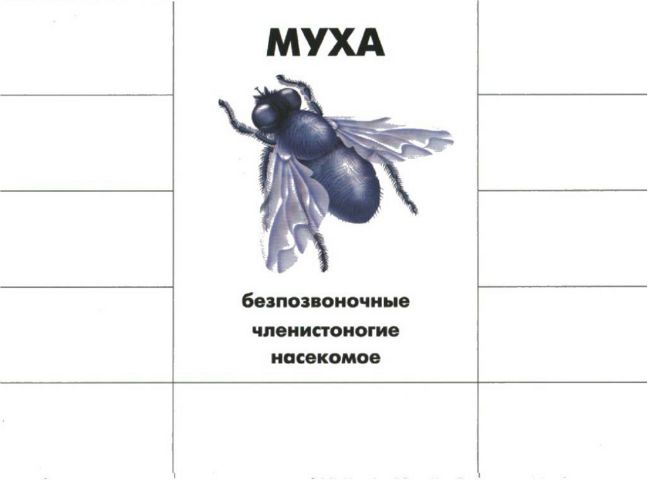
Offers to compare: what is common, how a fly and a bird differ, and name the parts of the body.
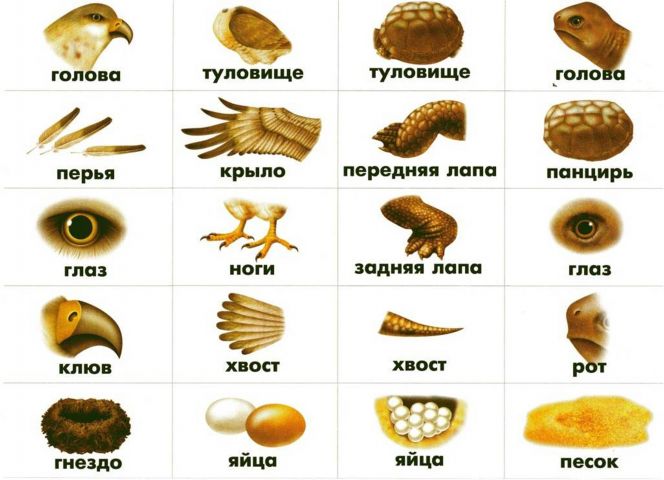
Summarize: birds and insects have a head, a body, eyes, and wings. They differ in that birds have a beak, feathers, and a tail. Insects have antennae, an abdomen, a thorax, and 6 legs; the body of any insect is, as it were, divided into segments.
Educator: Guys, do you think a spider is an insect? (shows an image of a spider - no, it has 8 legs). Well done. We saved the fly!
4. Didactic game “What’s first, what’s next.”
Educator: And now we guys need to save the caterpillar. To do this, we will help her turn into a butterfly. You have pictures in your plate that depict the stages of the transformation of a caterpillar into a butterfly. Think about it and put them in order.
Then the teacher demonstrates the diagram “Reproduction and development of butterflies”, the children check it.
Educator: Tell me, what does the butterfly lay first? (The butterfly lays eggs)
- Who comes out of the egg? (A caterpillar emerges from an egg)
- What does the caterpillar do? (She eats leaves and grows)
- Who is she turning into? (The caterpillar turns into a chrysalis)
- Who comes out of the chrysalis? (A butterfly emerges from a pupa)
Educator: You and I also saved the caterpillar. Let us also try to turn into butterflies and save the butterfly.
5. Physical education lesson - coordination of speech with the “Caterpillar” movement.
This strange house without windows (they slowly turn around themselves) People call it a “cocoon”. Having twisted this house on a branch, (rotate with hands) The caterpillar dozes in it (palms under the right cheek) Sleeps without waking up all winter. (Palms under the left cheek) But winter passes by - (waves hands up) March, April, drops, spring... (Clapping hands on every word) Wake up, sleepyhead! (Stretch) Under the bright spring sun (they draw the sun with their hands) The caterpillar has no time to sleep. (They shake a finger) She has become a butterfly! (They run in a circle, wave their arms like wings)
Educator: Guys, you are so great! You saved the butterfly.
6. Didactic game “Who moves and how.”
Educator: Insects live not only on the ground, but also in air and water.
They can crawl, walk, fly, swim, jump, and run. Now you must correctly guess how the insects move.
Take the envelope. It contains signal cards: a ball-insect is jumping, a plane-insect is flying, a string-an insect is crawling.
Shows pictures of insects, children pick up the corresponding card. (The child helps fill out the table and inserts pictures).
Educator: Well done. You helped me save the grasshopper.
7. Finger game “Bee”.
She arrived to us yesterday. Striped bee. And behind her is a bumblebee and a cheerful moth (we bend our fingers). Two beetles and a dragonfly (we make circles from our fingers and bring them to our eyes), like lanterns for the eyes. They buzzed, they flew (we wave our palms), they fell from fatigue (we drop our palms on the table).
8. Conversation:
Educator: Guys, in order to save the dragonfly and the bee, we need to find out which insects are beneficial and which are harmful. Do you think butterfly, bee and ant are beneficial insects? (Yes). What benefits do you think they bring?
Educator: Bees pollinate flowers, collect pollen and nectar from flowers, and then transfer the nectar to the cells of the honeycomb, where it turns into honey. And everyone knows that honey is not only tasty, but also very healthy. In winter they feed on this honey.
Butterflies pollinate plants.
Ants are called the “orderlies of the forest.” They destroy harmful insects that eat leaves and needles of trees. Red forest ants from one large anthill can destroy about 10 million dead insects over the summer. Ants carry seeds of many plants throughout the forest.
The teacher suggests considering the following insects: fly, caterpillar, mosquito.
Educator: Are these harmful insects or beneficial ones? (harmful). And what harm do they cause: a fly spreads germs, a caterpillar eats plant leaves, a mosquito drinks blood. There are insects - predators. (The teacher shows a picture of insects).
Name insects that are predatory (dragonfly, grasshopper, ladybug). Why are they called predators? (Children's answers: they are called that because they feed by hunting other insects).
Many insects are needed by animals and birds; they are food for them. Well done, we saved the dragonfly and the bee.
III . Reflexivti – correction of ears/Reflexive – corrective
Summary of the lesson. A picture appears with insects in a flowering meadow. “Thank you guys for saving us from the evil spider!”
Educator: Our journey has come to an end, what a great fellow you all are for helping the insects. Look how beautiful the clearing has become. It's time for us to go back to kindergarten. But first we need to turn into children again. Let's take our magic flower, close our eyes and say the magic words:
-You are a flower, help and turn us into children!
Here we are again in kindergarten! Children, who did we help today? And in order for me to find out how well you know about insects, we will play a question and answer game. If the statement I made is true and you agree with it, you clap your hands; if this statement is false, incorrect, you stomp.
- Insects have 6 legs.
- Insects do not have antennae.
- The insect's body has three parts: head, thorax and abdomen.
- Ants live in hives.
- Bees give people wax and honey.
- Flies give honey.
- You can't destroy anthills.
- Butterflies and bees pollinate plants.
- A dragonfly is a bird.
- Insects are food for other animals.
Educator: Sometimes people are compared to insects. Find out who they say this about: hardworking like...(bee, ant), annoying like...(fly).
Don't forget insects are part of living nature. Let ants and beetles crawl on the ground, let grasshoppers jump on the grass, let butterflies and dragonflies fly, and let the world we live in always remain blue and green! Protect the environment!
Kutiletin natizhesi (Expected results): children develop a cognitive interest in the diversity of insects and their characteristics, the ability to notice the beauty of the world around them, and develop active speech. Emotional involvement in educational activities, the ability to cooperate, negotiate with each other, interact constructively in a group, develop attention and visual memory are formed.
